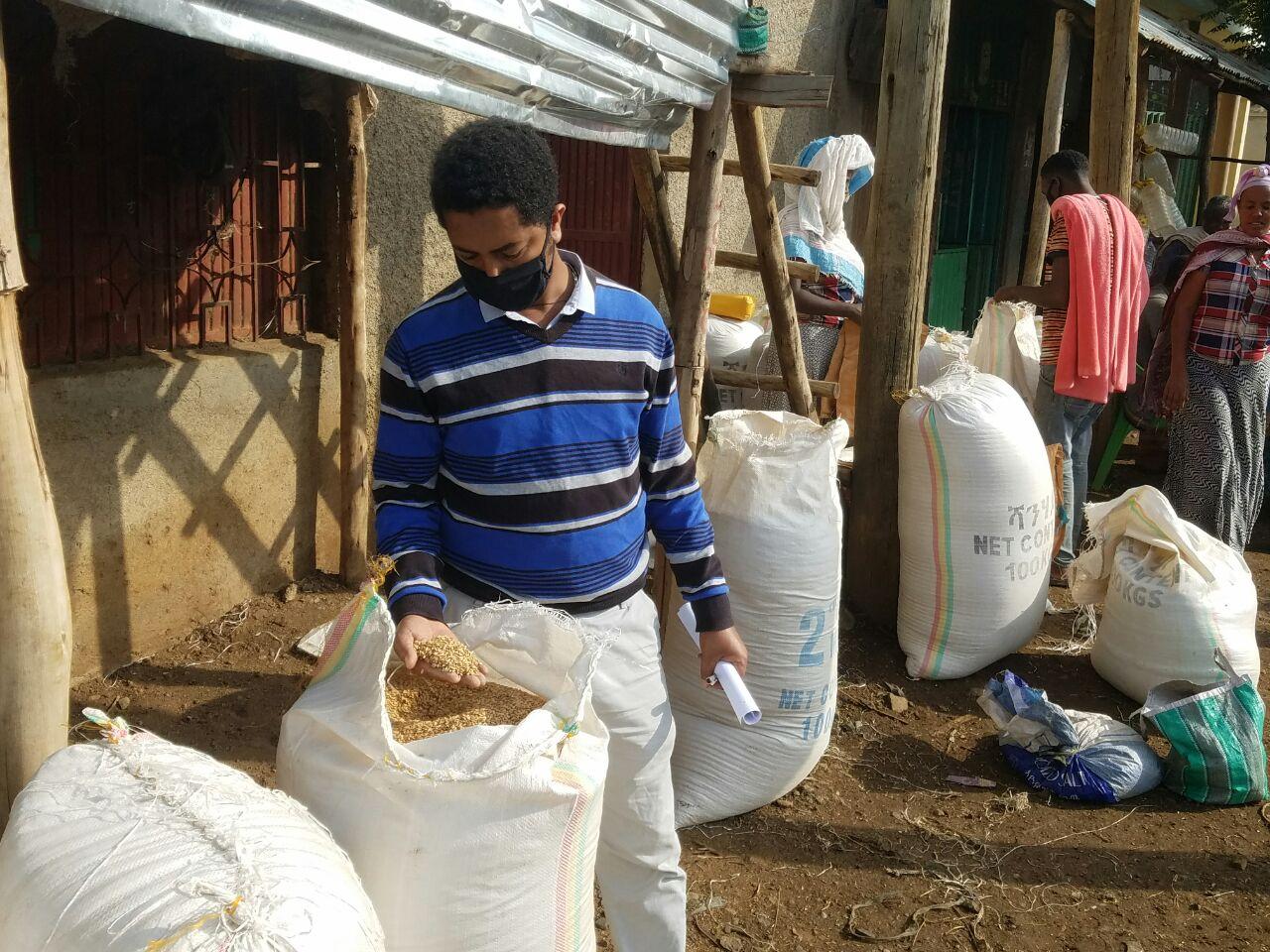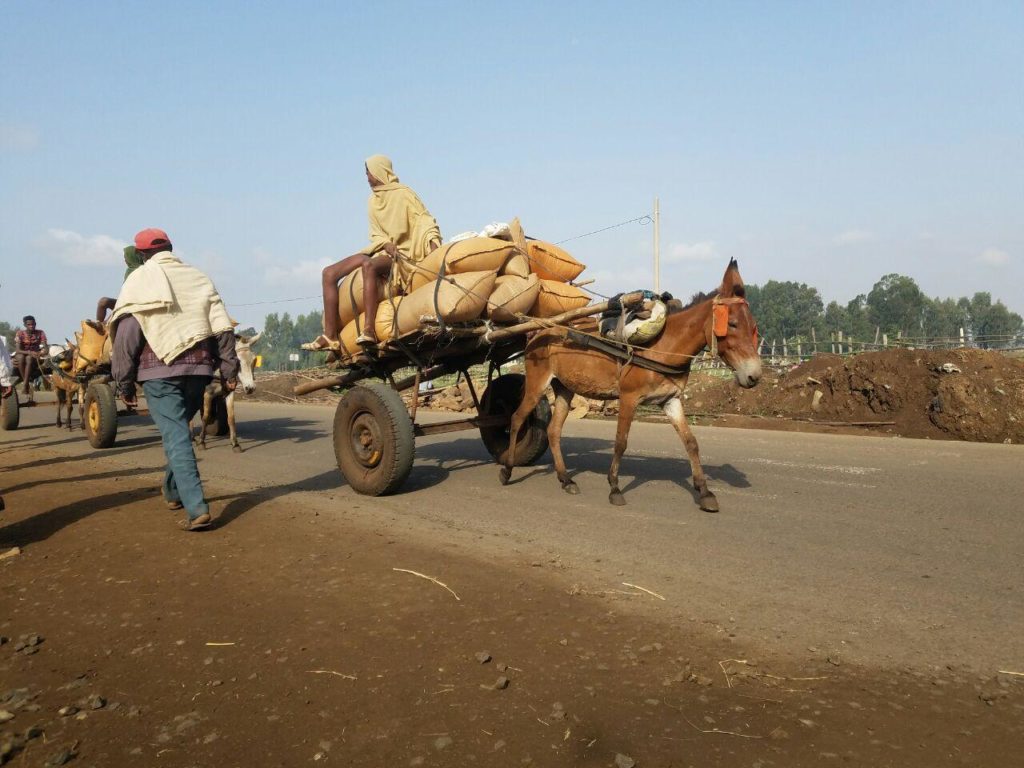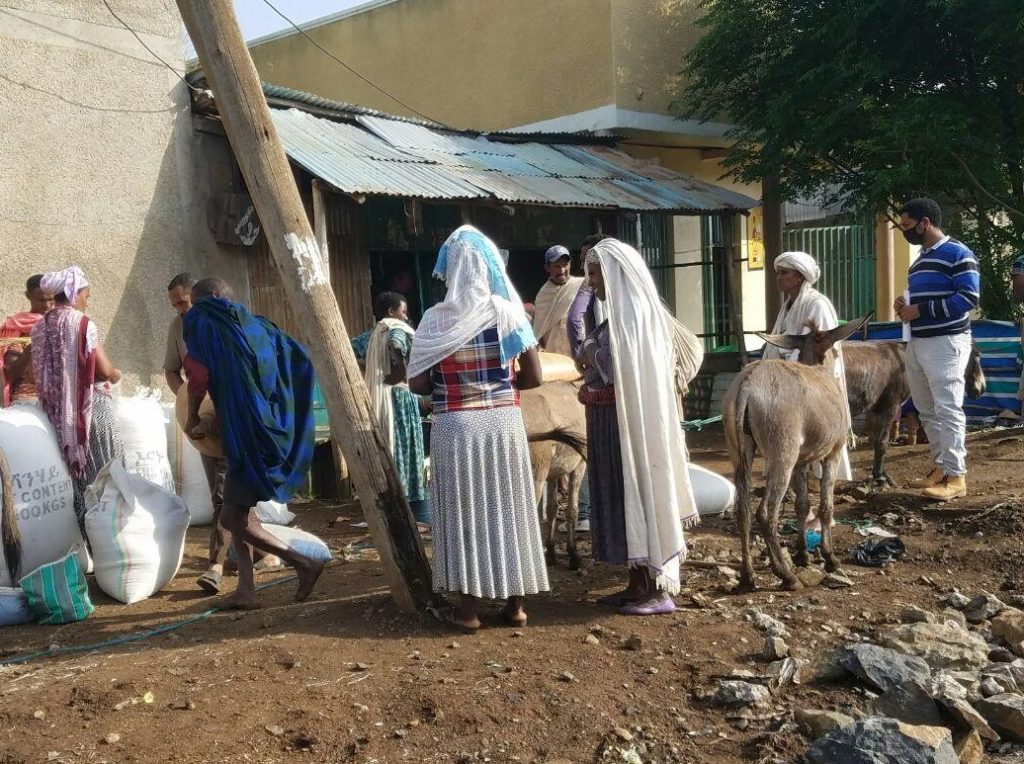COVID-19: responses of rice farmers and processors in the Fogera Plain, Ethiopia

In our second in a series of blogs of the impact of COVID-19 in Ethiopia, APRA researchers Dawit Alemu and Abewaw Assaye examine the reaction of rice farmers and processors on the Fogera Plain to the lockdown measures, and whether they adapted to new circumstances.
Read more on the Impact of COVID-19 on Food Systems and Rural Livelihoods in Ethiopia in the Round One and Round Two APRA country reports.
Read the full APRA synthesis report on the Rapid Assessment of the Impact of COVID-19 on Food Systems and Rural Livelihoods in Sub-Saharan Africa, here.
Written by Dawit Alemu and Abebaw Assaye
The first confirmation of a COVID 19 case in Ethiopia was on 13th of March 2020 and with the increase of cases, the government declared state of emergency (SoE) on 10th of April 2020. The SoE and its implementation directive determined the different measures and restrictions applied nationally. The key measures and restrictions that are relevant for rice value chain were:
- Mobility restriction and increased cost of transportation for both human and goods.
- Establishment of command posts (taskforces) at different administration levels for follow up and control of movement of goods and pricing as per the directives of the implementation of SoE.
- Reduced extent of public services that have association with rice production, processing, and marketing.
Reaction to lockdown measures
Due to the reported COVID 19 case in Bahir Dar city, there was a two-week lockdown restriction that affected the mobility and operation of rice market actors, including operation of rice processors. The period from January to May is the major marketing season for both paddy and milled rice, therefore we assessed how the COVID 19 incident and the different public measures (listed above) taken in the Fogera Plain affected the paddy and milled rice market, with focus on the responses of the value chain actors. Rice processors, who previously informed us about their businesses and operations, refrained from providing required and trustworthy information. This led us to strategise the approach to collecting information. Accordingly, we followed the movements of paddy and milled rice starting from farmers to the processors and to other actors (wholesalers, retailers and transporters).

Rice farmers traveling to Wereta town indicated that farmers in rural areas are not willing to sell their paddy to processors, even though unit prices were higher during the lockdown. This suggested that processors also changed their commercial behaviour and expected similar increases in prices. We learned from local retailers/wholesalers that processors reduced production and bought paddy to stockpile them at private storehouses. Paddy rice can be stored for a longer period without pest damage compared to milled rice. The processing is planned to be made in a piecemeal approach by considering price trends, and they currently process in small volumes to demonstrate to authorities that they continue to operate. Before COVID 19, rice was processed for free with an arrangement of price setting per unit of volume of milled rice, where the leftovers (broken rice, bran and husk) used to be considered as compensation for the processing services (see this APRA brief for detail).
We later realised that the limited willingness of processors to provide information was associated with the fear that a local command post (a taskforce comprising of experts from different public offices to detect rule-breaking) established to manage and control food grain marketing would be aware of their hoarding. Hoarding for the intention of manipulating markets is one of the prohibited behaviours in the COVID 19 state of emergency measure, including any price manipulations.
Though measures are put in place along with mechanisms to implement them, the reality is that unit price of paddy and milled rice are increasing substantially in the Fogera plain and both farmers and processors are engaged in the hoarding of paddy, increasing the price in local markets, as controlling such market behaviour without market incentives to benefit current or future income is very difficult.

2019 vs 2020 price comparison
The price data indicates that rice farmers are enjoying higher price that has increased on average by 5.67% every month from January to May 2020 and by 14.72% compared to the five-month average price compared to 2019. Similarly, the price of milled rice has shown increasing trend with average monthly price increase of 14.63% from January to May 2020.

Source: Wereta city administration, office of trade and market development
Looking ahead
The impact of COVID 19 on smallholder rice farmers will be clearer in the next production season (June – Dec, 2020), where it is expected to be shortage of hired labour due to labour mobility restrictions and/or expected increased daily wages, and limitation in the provision of adequate extension services. Those rice farmers engaged in vegetable production during the off-season that are not consumed locally (such as cucumber, tomato, cabbage and watermelons) are highly affected due lack of market as the main customers mainly hotels, restaurants and institutional purchasers (universities and colleges) have stopped purchasing. This in turn will seriously affect the production diversification trends observed in the Fogera plain along with increased investment in irrigation.
Cover photo: Paddy rice at a rice processor. Credit: Abewaw Assaye.
Please note: During this time of uncertainty caused by the #COVID19 pandemic, as for many at this time, some of our APRA work may well be affected in coming weeks but we aim to continue to post regular blogs and news updates on agricultural policy and research.
